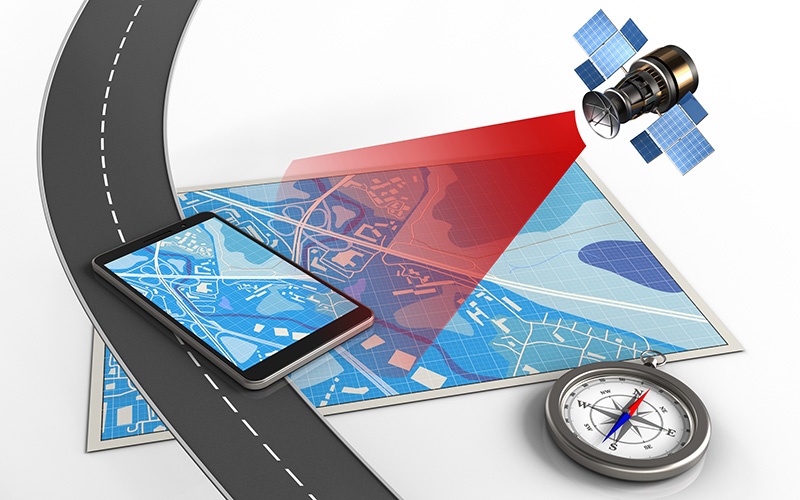The Future is Here: Big Data, Telematics and Fleet Management

 Fleet telematics has come a long way since it first emerged in the early 1990s. What was initially a simple GPS system to pinpoint the location of a vehicle and tell if a vehicle was or wasn’t in motion has evolved into a sophisticated data gathering tool that can drive bottom-line benefits to fleets of all functions, compositions and sizes.
Fleet telematics has come a long way since it first emerged in the early 1990s. What was initially a simple GPS system to pinpoint the location of a vehicle and tell if a vehicle was or wasn’t in motion has evolved into a sophisticated data gathering tool that can drive bottom-line benefits to fleets of all functions, compositions and sizes.
Today, fleet telematics technology integrates routing, geo-fencing, navigation, two-way communication, vehicle diagnostics, dashboard, real-time driver and vehicle alerts, customizable reports and a host of other features that collect critical data about vehicles and drivers that fleet managers use to shape strategy and improve efficiency.
Simpler and Smarter Management
While the needs of every fleet are different, many fleet managers are discovering that telematics is cost-effective and simple to integrate, leading to significant benefits.
To that end, let’s look at two key areas of responsibility and how they benefit from telematics integration.
Fuel
Since fuel is one of the largest operational expenses, finding ways to reduce fuel costs is an ongoing challenge. To overcome this, fleet managers need look no further than telematics for its monitoring and data collecting capabilities.
Telematics allows fleet managers to make intelligent decisions about fuel use and planning through the use of detailed reports of collected data on key areas that impact fuel consumption, including:
- Idling—Not only is idling a gas-guzzler, it reduces engine life and harms the environment.
- Speed—It’s simple, excessive speed means higher fuel costs. What may be surprising is by how much. According to the U.S. Department of Energy, every 5 mph driven over 50 mph is like paying $0.24 more per gallon of fuel.
- Vehicle Maintenance—Performing regular maintenance on fleet vehicles means vehicles are performing optimally, which improves fuel efficiency. Clogged air filters and improperly inflated tires send fuel prices skyward.
- Routing—Ensuring drivers are taking the most efficient routes, means less fuel consumed, less wear and tear on vehicles, increased productivity and greater customer satisfaction.
- Utilization—Knowing how much of a vehicle’s time is involved in productive work can determine if fewer vehicles need to be on the road to complete a job. Fewer vehicles means a more efficient and productive fleet and less fuel wasted.
Safety and Maintenance
Driver and vehicle safety are always a top priority. Just one accident can cause significant damage to a fleet’s bottom line. Two of the biggest contributors to accidents are driver behavior and maintenance issues, and here’s how telematics can help.
Telematics provides real-time alerts and data on driver behavior so fleet managers know how a driver is performing. With this information, fleet managers can determine if a driver needs additional education and training to improve their skills. Drivers with the highest skill can get better mpg than those with fewer skills (33 percent better according to the American Trucking Associations), and education and training are major factors for decreasing accidents.
Additionally, knowing the location of a vehicle through vehicle tracking is key to driver safety. For example, if a driver does not return when expected, telematics can pinpoint their location and assistance can be immediately sent if necessary.
When it comes to vehicle maintenance, telematics can automate maintenance tracking schedules, which can help prolong the life of each vehicle, reduce labor expenses and reduce repair and replacement costs. Not only can alerts be scheduled for routine maintenance, but telematics can also provide an alert if a vehicle is operating out of certain parameters, which allows potential problems to be addressed before they become an emergency and/or a major expense.
Telematics also makes it possible to schedule maintenance at times that have the least impact on work productivity.
Shaping the Fleet of the Future
Looking to the future, one trend cited by industry experts is that big data will drive decisions for all aspects of fleet management, from vehicle selection to maintenance management and driver safety planning. Within the next two decades, experts estimate that telematics will be installed on most fleet vehicles.
With the rise of telematics, look for fleets to be more efficient, more productive, operate with fewer resources and for data to be evaluated in novel ways that will provide benefits we can now only imagine.
What are you waiting for?
Improve fleet efficiency and driver productivity with our web-based and wireless etrac-AVL technology solution. Learn more by clicking below.
